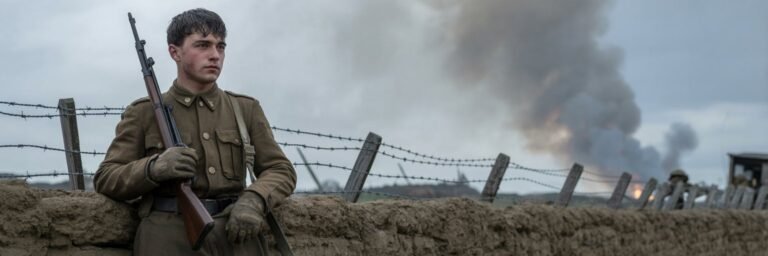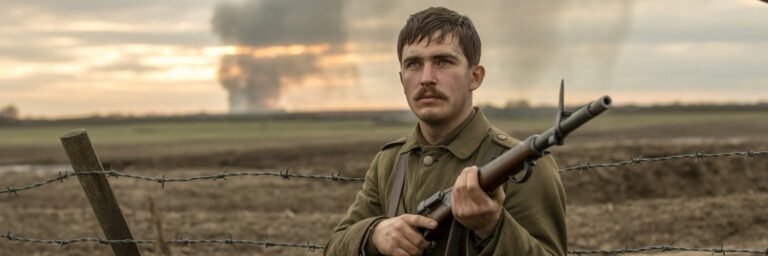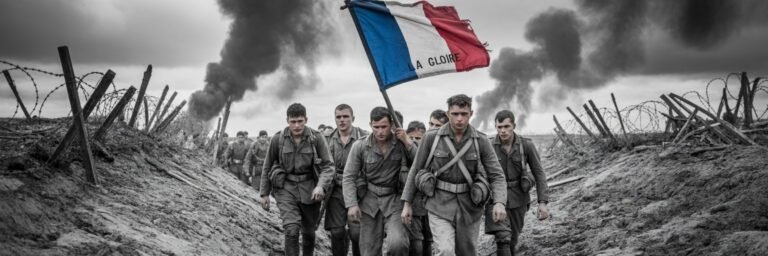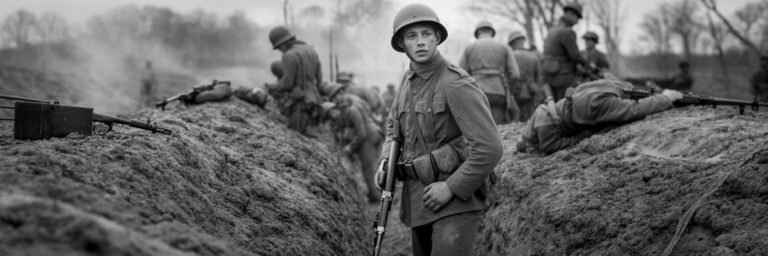INTRODUCTION
The dawn of the 20th century ushered in the era of World War I, a catastrophic conflict that transformed the world in ways that continue to reverberate in our collective memory to this day. The cataclysmic scale of the devastation and human suffering inevitably gave rise to profound introspection and deep existential questioning about humanity’s place in the universe and its relationship with divine forces. This exploration of the intersection between World War I and the realm of religion and mythology is a journey through uncharted territories of faith, folklore, and spiritual endurance that encapsulates the human story in all its dimensions.
HISTORICAL BACKGROUND
When World War I began in 1914, the religious landscape of the world was dominated by Christianity in the West and Islam in the East. Traditional pre-Christian and pre-Islamic folk religions persisted in Africa, Asia, and other parts of the world, coexisting and often intertwined with the teachings of established world religions. And on the battlefields of the war, soldiers from all these diverse backgrounds would come together, not just to fight, but also to question, to hope, and ultimately to seek meaning amid the senseless destruction.
In this crucible of conflict, religion provided solace to many, but also bred despair in others. Many in the Christian world saw the war as a divine punishment for humanity’s sins, invoking biblical prophecies about the apocalypse. Others turned to ancient mythologies, seeking parallels between their experiences and the struggles of mythical heroes. Among Muslim soldiers, the concepts of Jihad and Martyrdom reached new importance, shaping both their approach to the war and their interpretations of its consequences.
THEORIES AND INTERPRETATIONS
The religious and mythological interpretation of World War I is a rich field of inquiry that invokes academic theories spanning anthropology, psychology, and theology. One such framework is war theology, which seeks to reconcile the reality of conflict with religious principles. Historians like Robert Graves and Siegfried Sassoon, soldiers turned writers, narrated their experiences using the lens of ancient mythologies, suggesting a psychological need to frame the war within a larger cosmic narrative.
A parallel line of inquiry is based on the reinterpretation of religious texts in the light of the war. Reports from the frontline regularly told of visions and miracles experienced by soldiers, including the famous “Angels of Mons” where heavenly entities were alleged to have protected British troops from German forces.
MYSTERIES AND CONTROVERSIES
The World War I era was a fertile time for religious and spiritual mysteries. The most famous of these controversies is undoubtedly the story of the “Angels of Mons.” Popularized in Arthur Machen’s short story “The Bowmen,” the tale tells of spectral archers from the Battle of Agincourt who came to the aid of beleaguered British soldiers. Skeptics consider this a classic case of war myth shaped by desperate circumstances, but believers argue it reflects divine intervention.
The issue of religion was also at the heart of political controversies of the time. The religious justifications for the war, wielded by the governments of both sides, have been widely criticized in retrospect for exploiting naive patriotism.
SYMBOLISM AND CULTURAL SIGNIFICANCE
World War I had profound impacts on the cultural symbolism of many societies. Ancient symbols took on new meanings, and new symbols emerged altogether. Trench art – makeshift pieces of creative expression crafted by soldiers on the frontline – often incorporated religious and mythological motifs, reflecting their creators’ inner states.
The red poppy emerged as the war’s most universal symbol, believed to grow in high concentrations over former battlefields due to lime from the rubble making the soil more suitable. In literature and the arts, the war spurred a reimagining of old myths, from the Arthurian legend––resurrected as a metaphor for nobility in war––to the Icarus myth, invoked to convey the hubristic overreach that many associate with the causes of the war.
MODERN INVESTIGATIONS
The relationship between World War I and the realm of religion and mythology remains an active focus of scholarly investigation. Recent research has delved into diverse areas such as the politicization of religious discourse during the war, the impact of the war on religious and spiritual belief systems, and the reinterpretation of mythology in war literature.
Legacy and Conclusion
The unprecedented scale and horror of World War I brought a seismic shift to humanity’s religious and mythological understanding, marking the onset of a wave of skepticism and existential inquiry that shaped the century to follow. The war stood—at turns—as a crucible of faith, a theater of prophetic fulfillment, and an echo chamber of ancient myths for people struggling to comprehend the incomprehensible.
Even a century later, the echoes of the “Great War” continue to resonate, underscoring not only our capacity for destruction but also our enduring quest for meaning and transcendence. Inarguably, the exploration of World War I through the lens of religion and mythology illuminates the human condition in its most paradoxical aspects—its quest for reason amid unreason, light in the heart of darkness, and life in the theater of death.






